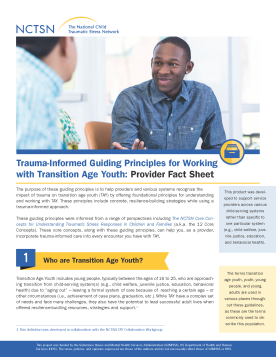
Trauma-Informed Guiding Principles for Working with Transition Age Youth: Provider Fact Sheet
Offers information for providers supporting transition age youth with trauma-informed guiding principles to inform their work.
The following resources on Justice were developed by the NCTSN.

Offers information for providers supporting transition age youth with trauma-informed guiding principles to inform their work.
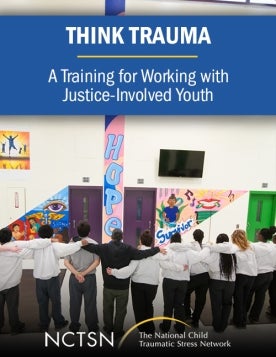
Is a virtual guide that walks through Making Think Trauma Stick: A Guide to Training and Implementation, developed by the National Child Traumatic Stress Network (NCTSN).

Helps juvenile justice agencies support children and youth during and after natural disasters. This toolkit is for juvenile justice staff, supervisors, and administrators who work with and on behalf of children, youth, and families who experience a natural disaster.
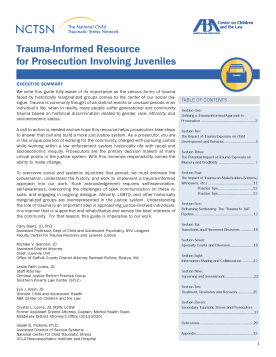
Provides prosecution attorneys with knowledge about a trauma-informed approach to prosecution.

Offers helpful questions about safety that judges, legal professionals, and court personnel can ask themselves regarding their work and their personal lives.
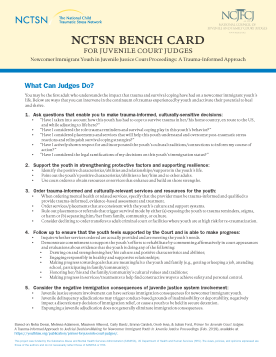
Provides judges with information they need to know about newcomer immigrant youth and trauma. This bench card offers useful questions and guidelines to help make decisions based on the specific needs of newcomer immigrant youth.
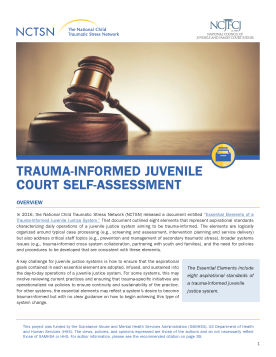
Provides a juvenile justice system with a framework to examine, review, and rate day-to-day operations with a set of benchmarks to evaluate to what extent court operations reflect the content, process, and systems-level procedures reflected in each essential element.
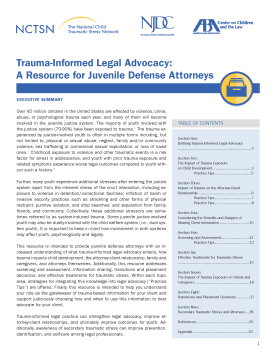
Provides juvenile defense attorneys with knowledge about trauma, the definition of trauma-informed legal advocacy, the impact of trauma exposure on child development, and effects of trauma on the attorney-client relationship.
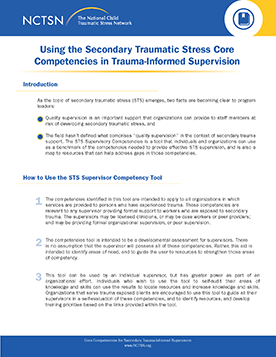
Discusses the importance of quality supervision that organizations can provide to staff members at risk for secondary traumatic stress (STS).
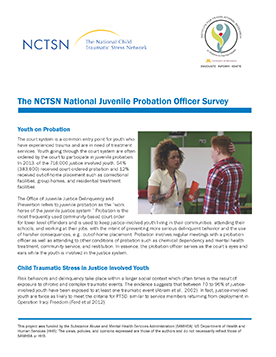
Details the results of a nationwide survey of probation officers. This survey looks at what probation officers know about trauma, how best to collaborate with them, and what products they would like to meet their needs with respect to trauma-informed practices.
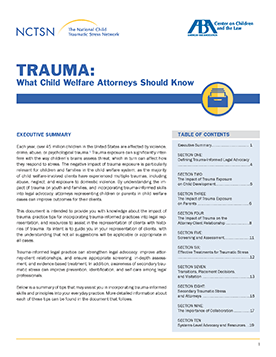
Provides child welfare attorneys with knowledge about trauma, practice tips for incorporating trauma-informed practices into legal representation, and resources to assist in the representation of clients with histories of trauma.

Delineates the path from complex trauma exposure to involvement in the juvenile justice system.